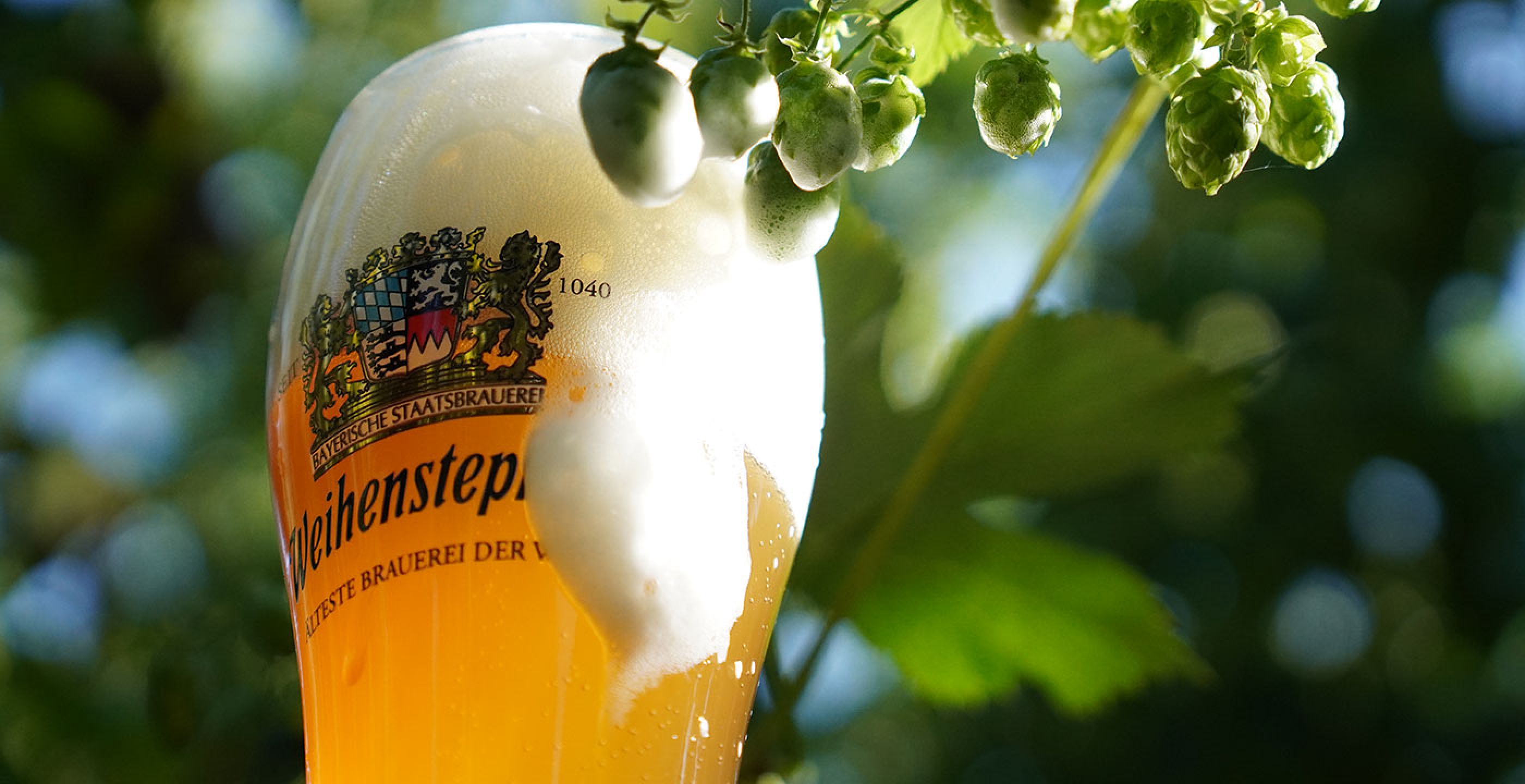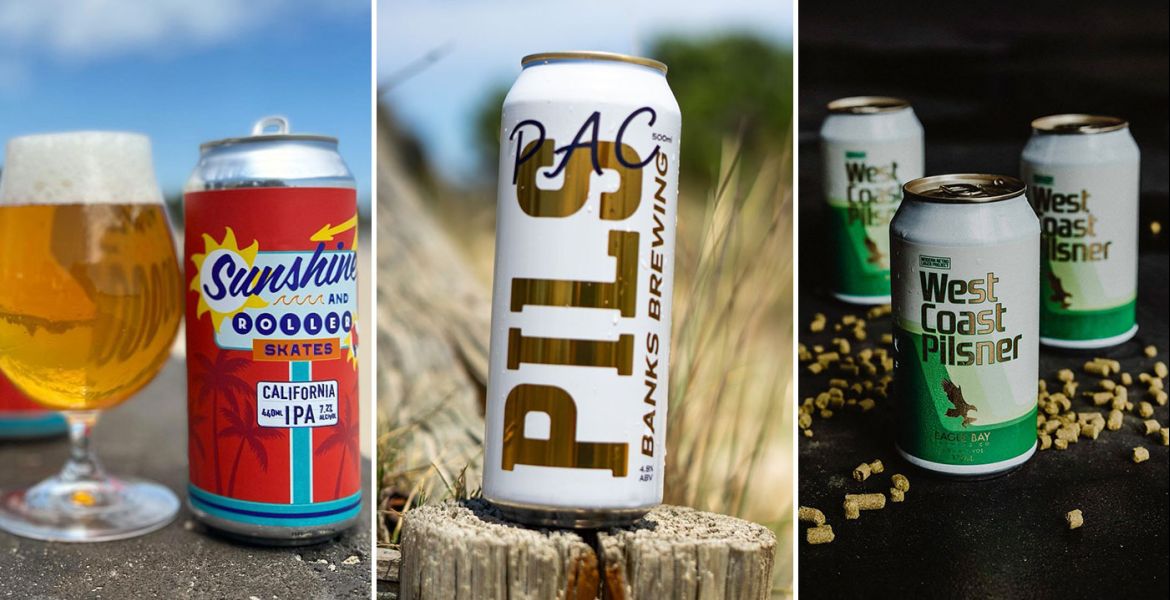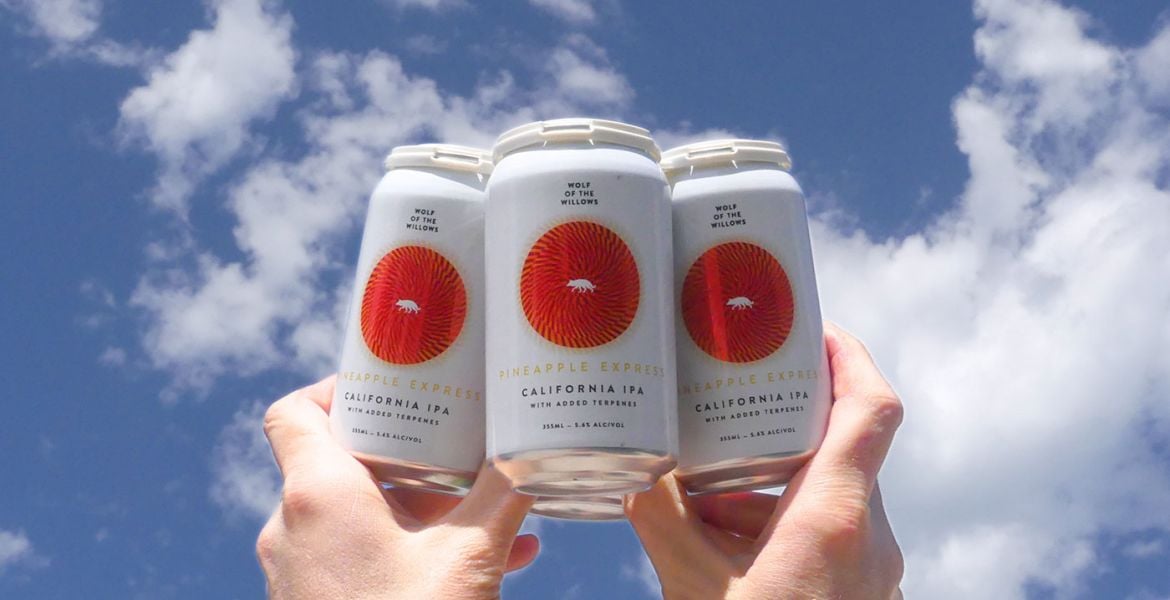Classic wheat beers like Weissbier and Witbier are few and far between in Australia, at times polarising consumer tastes. Newer styles like American Wheat and Aussie Wheat Ales have had some time in the limelight, but where do they sit in the Australian beer market now?
Here, we explore what these wheat beer styles are, where they come from, their common ingredients, how they taste, and suggest some locally-brewed examples you can attempt to track down.
Wheat In Beer

Wheat is the second most common malted grain used in brewing besides barley. Beer styles with high portions of wheat range from fruity and dry to spiced and mildly sweet.
Weissbier, known as Hefeweizen outside its birthplace, has a rich history dating back to Bavaria in the 16th century. Initially brewed by monks, this wheat beer gained popularity among Bavarian royalty and eventually became a staple in German beer culture.
Historically, brewing in Germany is governed by the Reinheitsgebot beer purity law of 1516, allowing only malted barley, water, and hops in brewing (yeast was added later once it was understood). Since using wheat in brewing didn’t play by the rules, Weissbier was only brewed by specially licensed brewers in Bavaria who were connected to the German royal family. This gave the royals a monopoly on wheat beer production for the first 200 years.
The name "hefeweizen" translates to "yeast wheat" in German, highlighting its unique brewing process and ingredients. The key production feature that differs from other beers is its high proportion of wheat (at least 50 percent, up to 70 percent) in place of malted barley and its unique ale yeast strain.
Brewing with wheat often means longer rests during mashing or decoction mashing to break down proteins and reduce wort viscosity. Wheat proteins contribute a fluffy white head, hazy appearance and creamy mouthfeel. The remaining pale malted barley gives pale straw-gold colour, bread dough and water cracker aromas, while the Weissbier ale yeast delivers distinctive fruity esters like lolly bananas or confectionary bubblegum aromas along with spicy phenolic aromas like clove, nutmeg or vanilla. The beer is unfiltered, so yeast remains suspended in the beer, contributing to its hazy look and distinctive flavour profile.
The highly carbonated Weissbier experience is enhanced when served in a tall vase-shaped glass that can hold the entire beer with its fluffy head. Look for a balance of dry malty/bready notes with fruit and spice and a creamy texture that seems fuller than the medium alcohol level may suggest. A touch of acidity can be detectable from carbonic acid and the wheat itself.
Its soft, almost undetectable bitterness makes for great drinkability, perfect for a sunny day paired with fresh zesty foods like sushi and salads and of course traditional German sausages and sauerkraut. Overall, Weissbier is a style with rich history and a complex, yet approachable flavour profile, making it a beloved choice among beer enthusiasts worldwide.
Meet The Weissbier Family

Some variations using the same Weissbier ale yeast include Kristallweizen, a filtered version that pours clear and bright as the name suggests; Kristall means crystal in German). Darker versions are called Dunkel Weissbier or Dunkelweizen, with Dunkel translating to dark.
These beers are very similar to a regular Weissbier as they must still include 50 percent wheat malt in the grain bill, but with additional dark or crystal malts: typically Munich or Vienna malt giving them a deep amber-brown colour and a touch of sweetness. The emphasis is on caramel, with an occasional toasty bread crust character without ever being roasty. Still a refreshing highly carbonated beer, a good example of Dunkel Weissbier reminds many people of liquid banana bread.
Weizenbock is a rare sight, even in Bavaria where the style originated [Although, interestingly – for me at least – the first limited release I ever posted to this site within days of it launching was Red Hill's 2010 Weizenbock – Editor]. Consider it a bigger, stronger version of either a Weissbier or Dunkelweizen brewed to bock or even doppelbock strength in the range of 6.5 to 9.5 percent ABV – enough to warm the body and soul.
Weizenbock has the same banana and clove spice character as the other German Weissbiers with more intense malt-derived caramelisation with hints of toast plus dark fruits such as raisin, plum and prune. This rich, caramelised malt fruity sweetness should be balanced with high carbonation, making these very drinkable beers, despite the higher alcohol.
The Other Classic White Beer

All of Belgium’s modern brewing history can be traced to sustenance brewing, either on the family farm or in monasteries. The Witbier style, also known as White Ale or Bière Blanche in the French speaking part of Belgium, is no different. Its production process is distinctive and contributes to its unique flavour profile.
Wits are typically made with 50 percent unmalted wheat and 50 percent Pilsner malt, sometimes with gelatinised oats to deliver a pale straw colour with bready, grainy malt aromas, light body and a creamy mouthfeel. The purposefully hazy style goes through turbid mashing techniques and leaves unfiltered starch and yeast haze suspended giving a milky white appearance. Wits are traditionally bottle-conditioned and served cloudy, often topped with a fluffy white long-lasting head of foam.
Traditional Witbiers pay homage to a history of using other herbs for flavour and bittering before hops took hold as the main ingredient of choice. Belgians brewed with a mix of spices, most notably coriander and orange peel, which impart a refreshing citrusy flavour to the beer with a hint of floral from European hops.
The use of a specific Belgian ale yeast strain adds further complexity, notably fruity and spicy clove or peppery notes to round out the classic flavour profile. The spices should not be overwhelming, making this a subtle, refreshing yet complex beer as with Weissbier.
Witbiers are hard to come by in Australia although they pair brilliantly with our warm climate and accompany light seafood dishes and salads with a citrus tang.
For more on pairing witbiers with food, read this entry in The Matchmakers series.
The Revival Of The Great White Ales

Northern Germany and Belgium have shared similar brewing traditions since the Middle Ages, using spicy flavours and wheat as a backbone while hops take a back seat. Anyone who has experienced fresh Weissbier and Witbier in a European beer garden is immediately drawn into the strong beer culture of refreshing wheat ales; it’s hard to believe these styles were ever in danger of being lost completely.
Wheat beers went through a boom and bust cycle in popularity, mostly controlled by the Bavarian royal family and local laws. This changed in 1872 when Georg Schneider, a brewer in Munich, negotiated exclusive rights to brew the style. He built a new brewery breaking the long restriction and developed the Schneider-Weisse brand which is still made today thus reviving the classic Weissbier style.
Witbier also experienced a downturn thanks to wars, the arrival of lagers, and changing tastes, and fell into relative obscurity before disappearing in 1957 when the last brewery in the town of Hoegaarden closed.
We can thank Pierre Celis for the style’s rebirth in the 1960s. He had worked as a milkman at the brewery and founded a brewery revitalising his favourite beer calling it Oud Hoegaards Bier but with a new twist: adding orange and coriander. His recipes stayed true to their origins through brewery shutdowns, accidental fire and company buyouts.
The brand was eventually sold to AB InBev and continues as the popular Hoegaarden range. Pierre ended up moving to Austin, Texas, starting a new brewery in 1992 producing Celis White, which sparked a love for Witbier becoming the best-selling Belgian style in the USA. Today, beers like Blue Moon Belgian White, Shock Top White and Allagash White are widespread across America.
Some of the first beers that kickstarted Australia’s craft movement were based on classic wheat beer styles too: think Matilda Bay Redback, based on Hefeweizen, and Feral White, a riff on Witbier. Both hailed from WA and were nationwide bestsellers in their heyday.
Another beer inspired by Witbier is White Rabbit White Ale (pictured above) which claimed AIBA Champion Australian Beer in 2017. Then, in 2021, a filtered take on Hefeweizen – Blasta Brewing’s Blastaweizen – became Champion European Ale and overall Best in Show at The Indies. Award-winning beers like this still don’t see increased demand for wheat beer styles in the current market, as The Crafty Pint examined back in 2018.
Modernising A Classic Amid Changing Tastes

How have wheat beers evolved?
American Wheat Ales emerged as part of the craft beer movement in the late 20th century when brewers in the United States began experimenting with wheat in their beer recipes. This evolution led to a distinct style enjoyed by beer enthusiasts around the world.
Brewed with a significant proportion of wheat in addition to barley, they tend to display more hop-forward characters with less yeast-derived character than their German and Belgian cousins. Using neutral yeast strains, the resulting clean fermentation showcases subtle floury, grainy, bread dough wheat aromas to complement a soft, creamy mouthfeel, with some malty sweetness and a dry, crisp finish. Body and bitterness levels range from a little to a lot and might creep up depending on the hopping regime and types used.
Australian Wheat Ale came about as a term in late 2022 when Asahi/CUB ran a novel launch of "Aussie Wheat Ales" across mainstream lines with a simultaneous release from Mountain Goat, 4 Pines, Matilda Bay, Pirate Life and Green Beacon breweries. The brief to create a modern iteration using locally-grown wheat designed for Aussie beer drinkers that was "fruity", "fun" and "damn refreshing" all made sense considering Australia is one of the globe’s biggest producers of wheat.
The over-arching style is not unlike American Wheat Ales, with fruity, hop-forward notes rather than yeasty aromas, hazy appearance, soft bitterness, with a crisp finish. Some were served with a slice of orange or lemon – a nod to an American trend that started in the 1980s. Fast forward to 2024 and, after receiving limited public interest, this newer style hasn’t proven to be a hit in the Australian beer scene.
Interestingly, many beer drinkers are unaware they are regularly consuming ales with a relatively high portion of malted wheat as most don’t state "wheat" on the front label.
Mass-produced Stone & Wood Pacific Ale could be defined as an Australian Wheat Ale, while Pirate Life’s best-selling South Coast Pale Ale is based on American Wheat Ale recipes. Pirate Life head brewer Lewis Maschmedt admits to being a fan of all wheat beer styles and settled on 30 percent wheat malt in the grist along with pale malt, Carapils and rolled oats balanced with a restrained hop profile and lower bitterness than your average pale ale.
All-Important Yeast & New Strains

Alex Jarman, head brewer at Slow Lane Brewing, has built a reputation for sticking to traditional styles and continuous improvement of the breed. Their Classic Haze, based on Hefeweizen, is currently their third best-selling beer. He believes it sits with modern trends for an easy-drinking hazy beer with fruity characteristics, low bitterness and smooth mouthfeel much like a hazy pale ale without the focus on hops.
Alex has been experimenting with a range of wheat beer yeast strains Classic Haze, including the new-at-time-of-writing Fermentis SafAle W-68™ (pictured above in use at Campus Brewery) for a recent batch, as well as playing with fresh Hefeweizen FYS03 ale yeast in liquid form from Ferveo to deliver their take on a classic.
In the case of Fermentis, a yeast company based near the French/Belgium border, their drive to explore variations in yeast character in beer, particularly the nuances of phenols and esters, can be seen in the recent diversification of their wheat beer strains. A trio of European ale yeasts designed to enhance the distinctive characteristics of German and Belgian wheat styles prefer fermenting at warmer temperatures (18 to 26°C) with more floral aromas expected in the lower range (18-20°C) and increasing banana and bubblegum in the higher 24-26°C range.
Winning Over Consumers

Classic wheat beer styles are loved by brewers but misunderstood generally by the Australian market, and often not presented in a way drinkers expect. Australian breweries regularly report slow sales of wheat beer styles, which means many have shied away from them or at least avoid putting "wheat" centrally on a label.
The term "wheat beer" may not always convey the full range of flavours and diverse styles that can be offered, leading to a perception of homogeneity among wheat beers. It’s much like when sour beers started gaining popularity, but at least they had the advantage of "sour" taste called out on the label, thus pre-warning beer drinkers.
In the case of Weissbier, it’s unclear whether it’s the strong clove character some people find overpowering or too "medicinal", the bready wheat notes or such beers' cloudiness that may be off-putting. The issue isn’t confined to consumers: brewers and beer judges habitually recognise any phenolic character as an off-flavour, which is the case in almost every other beer style besides Bavarian Weissbier styles.
These polarising opinions combined with very few locally brewed traditional styles along with a limited understanding of German beer culture in Australia, could all contribute to wheat beer stigma.
Thankfully, brewers are a persistent bunch who appreciate beer history and keeping these recipes alive, so we can still find classic examples today. Many in the industry believe the flavour wheel will turn in their favour and look forward to consuming them in a sunny beer garden with a group of friends.
It’s always worth sharing more stories about European beer history and culture, perhaps re-badging Hefeweizen as "German Hazy" or a Wit as "The OG Belgian Hazy", thus making them more relatable to modern hazy pales. Encouraging people to try them for their visually stunning, uniquely aromatic and refreshing qualities can only help win over more beer drinkers and aid future moments of discovery.
Some Australian Examples

Weissbier/Hefeweizen
- Burnley Brewing Weizen
- Slow Lane Brewing Classic Haze – has spawned variants, such as hoppier takes
- Goodieson Brewery Wheat Beer
- King River Brewing Cliffhanger Hefeweizen
- Brightstar Brewing Hefeweizen – annual release for Oktoberfest festivities
- Holgate Brewhouse Hefe Weissbier – a typically annual release from the wheat beer lovers in Woodend
Kristallweizen
- Blasta Brewing Blastaweizen
Dunkel Weissbier
- Slow Lane Brewing Classic Dark Haze
Witbier
- Madocke Witbier
Dunkelweizen
- Red Hill Weizenbock – an annual winter release
Wheat Beers: Key Aromas & Flavours

- Weissbier (white) Weizenbier, weizen (wheat), hefeweizen (yeast wheat): unfiltered Bavarian style; banana, bubble gum, clove, fresh bread, bread dough
- Kristallweizen (crystal wheat): filtered Bavarian style
- Dunkelweizen (dark wheat), Dunkel Weisse (dark white): dark unfiltered Bavarian style; banana, clove, bread crust, toasted bread, caramel
- Weizenbock: strong higher-alcohol version Bavarian style
- Witbier (white, Belgium): Bière Blanche (white, France): citrus, coriander, spice, fresh bread
- American & Australian Wheat Ale: more hop-driven, less yeast-driven than Bavarian style; bread dough, water cracker, aromas depend on hop type and intensity




















